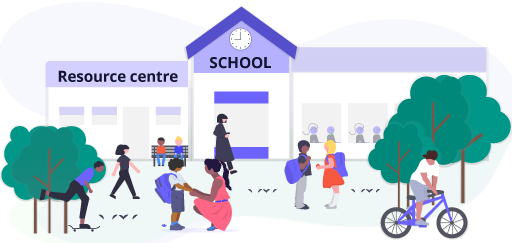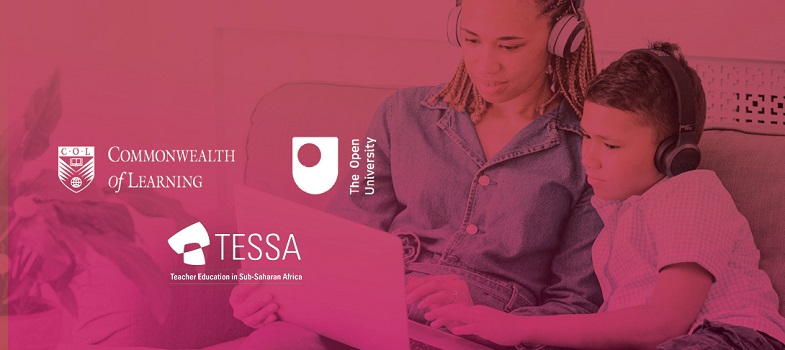Week 1: What are the features of an inclusive school?
3. The features of an inclusive school

Figure 2 Inclusive education in practice
UNICEF makes the following statements about inclusive education on its website:
Inclusive education means all children in the same classrooms, in the same schools. It means real learning opportunities for groups who have traditionally been excluded – not only children with disabilities, but speakers of minority languages too.
At the school level, teachers must be trained, buildings must be refurbished and students must receive accessible learning materials. At the community level, stigma and discrimination must be tackled and individuals need to be educated on the benefit of inclusive education.
Daniel and Lydia highlight both physical aspects of an inclusive school, and also what Daniel refers to as the ‘soft’ aspects – attitudes, willingness to work collaboratively, people who deliberately seek information.
It is perhaps worth highlighting that some aspects of creating an inclusive school, such building a resource centre, may sound daunting in view of the costs, but small changes can be made over time, which don’t cost very much and make a significant impact.
A ‘resource centre’ for example, may start as a table or cupboard in a staff room, where teachers contribute resources they have made from local materials. Over time, as the number of resources grow, a space can be found in a room or the resource centre could be included in the school library. In an ideal world, this will also be a place where specialist resources are kept and where experts trained in specific special needs might use as a base if they visit the school. It could also be a place for volunteers from the community to visit. They could take on tasks such as organising and labelling the resources, repairing them if they are broken, or even helping children with reading.
Each school and its pupils are unique and it’s important to recognise and remember this. The resource centre for your school, which benefits your specific mixture of pupils with and without disabilities, may look very different from a neighbouring school for this reason. You will need to identify the needs of your school’s pupils and balance what you can realistically provide and achieve in terms of the space you have available, the teaching and support resources and the budget to cover what you require.
Activity 1.3: Features of an inclusive schoolAllow approximately 40 mins for this activity. Download the UNICEF publication Inclusive Education. This booklet is a ‘call to action’ and sets out the implications of article 24 of the ‘Convention on the rights of persons with disabilities’. Skim through the publication and note down anything of interest to you. Look at the diagram on Page 4 which has ‘Inclusive education’ in the middle and five aspects of it highlighted in a circle. For a school which you are familiar with, reflect on what each circle might represent in practice. In your notebook write down some aspects of inclusivity which that school does well and some which could be developed. For example: ‘Cultural changes’ includes ‘respect for diversity and participatory learning’. The school might do well on the former, through a welcoming attitude, regular assemblies which celebrate diversity and some physical adaptations, but not have participatory learning embedded in its classroom teaching. |
